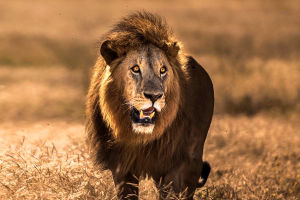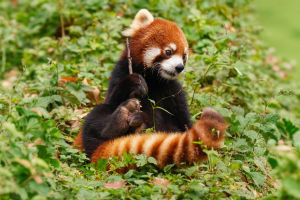Flamingos are one of the most fascinating birds in the world, known for their striking pink and red feathers. But have you ever wondered why they are so colorful?
The answer lies in their diet, particularly the pigments they consume from their food. In this article, we will explore what exactly influences the color of flamingos, why it happens, and what it tells us about their environment.
1. Flamingo's Food Sources
Flamingos thrive in salt flats, wetlands, and other water-rich environments that are teeming with microorganisms and algae. They have specialized beaks that allow them to filter food from the water, including tiny crustaceans, algae, and plankton. Among the most significant sources of their colorful pigments are red and orange algae and crustaceans, which are rich in carotenoids. These carotenoids are absorbed through the flamingos' digestive systems and accumulate in their feathers, skin, and other tissues. This process contributes to their distinctive pink and red hues. Interestingly, different species of flamingos have varied dietary preferences, which in turn influence the intensity of their color.
2. The Role of Pigments
Carotenoids, a type of natural pigment, play a crucial role in the health and well-being of flamingos. These pigments are not only responsible for the birds’ vibrant colors but also have antioxidant properties, which can help improve their health and reproductive success. During mating season, more colorful flamingos are more likely to attract mates, improving their chances of reproduction. The vibrant hues act as an indicator of health and vitality, making them more desirable in the eyes of potential partners.
Why Flamingos Are So Pink? The Science Behind Their Eye-Catching color
Video by One Minute Explore
3. The Connection Between Diet and Color
The change in a flamingo’s color is a gradual process that happens over time. Baby flamingos start out with gray feathers, and as they begin to consume foods rich in carotenoids, their feathers slowly transform into pink or red. The more carotenoids they ingest, the more intense their color becomes. Interestingly, flamingos living in areas with abundant algae tend to be more vividly colored than those in other environments with different food sources. This is why flamingos from different parts of the world can have slight variations in their color.
4. Other Influencing Factors
While food is the primary factor in determining the color of flamingos, other aspects such as age, health, and environment can also have an impact. Younger flamingos, for example, have not yet fully developed and, therefore, accumulate fewer pigments, leaving them with grayish or pale feathers. On the other hand, healthy flamingos can efficiently absorb the nutrients from their food, which helps them maintain their bright feathers. Additionally, the quality of the water and the abundance of food in the flamingos’ habitats can affect the intensity of their color.
5. Ecological Significance
Flamingos’ color changes are not only a fascinating biological feature but also carry significant ecological meaning. The colors of flamingos reflect the health of their habitat and the food chain. As part of the ecosystem, flamingos offer insight into the nutrient levels in their water environments. By studying their color changes, scientists can gauge the health of wetlands and detect changes in the ecological balance. Therefore, flamingos serve as important indicators of environmental health, helping researchers monitor the state of these delicate ecosystems.
6. Flamingos as Ecological Indicators
In conclusion, the vibrant colors of flamingos are primarily determined by the carotenoids in their diet. These pigments not only impact their appearance but also their health, reproductive success, and interactions with the environment. The more we understand about flamingos’ feeding habits and their habitats, the more we appreciate the intricate connection between these beautiful birds and their ecosystems. Protecting their natural environments and ensuring a diverse, healthy food source is key to preserving flamingos and the delicate ecosystems they inhabit.
Thank you for reading! We hope this article helps you understand flamingos a little better. Feel free to share your thoughts with us! Happy learning, Lykkers!


